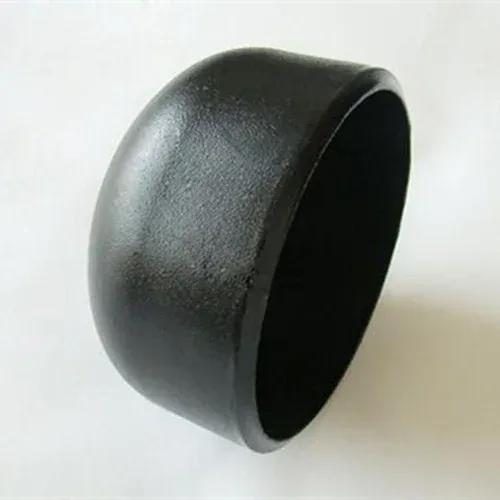-
Cangzhou Yulong Steel Co., Ltd.
-
Phone:
+86 13303177267 -
Email:
admin@ylsteelfittings.com
- English
- Arabic
- Italian
- Spanish
- Portuguese
- German
- kazakh
- Persian
- Greek
- French
- Russian
- Polish
- Thai
- Indonesian
- Vietnamese
- Zulu
- Korean
- Uzbek
- Hindi
- Serbian
- Malay
- Ukrainian
- Gujarati
- Haitian Creole
- hausa
- hawaiian
- Hebrew
- Miao
- Hungarian
- Icelandic
- igbo
- irish
- Japanese
- Javanese
- Kannada
- Khmer
- Rwandese
- Afrikaans
- Albanian
- Amharic
- Armenian
- Azerbaijani
- Basque
- Belarusian
- Bengali
- Bosnian
- Bulgarian
- Catalan
- Cebuano
- China
- China (Taiwan)
- Corsican
- Croatian
- Czech
- Danish
- Esperanto
- Estonian
- Finnish
- Frisian
- Galician
- Georgian
- Kurdish
- Kyrgyz
- Lao
- Latin
- Latvian
- Lithuanian
- Luxembourgish
- Macedonian
- Malgashi
- Malayalam
- Maltese
- Maori
- Marathi
- Mongolian
- Myanmar
- Nepali
- Norwegian
- Norwegian
- Occitan
- Pashto
- Dutch
- Punjabi
- Romanian
- Samoan
- Scottish Gaelic
- Sesotho
- Shona
- Sindhi
- Sinhala
- Slovak
- Slovenian
- Somali
- Sundanese
- Swahili
- Swedish
- Tagalog
- Tajik
- Tamil
- Tatar
- Telugu
- Turkish
- Turkmen
- Urdu
- Uighur
- Welsh
- Bantu
- Yiddish
- Yoruba

Oct . 07, 2024 11:13 Back to list
butt weld reducing tee
Understanding Butt Weld Reducing Tee A Comprehensive Overview
In the field of piping systems, the need for efficient transportation of fluids and gases is paramount. One critical component that facilitates this is the butt weld reducing tee. This fitting is crucial in various industries, including oil and gas, water treatment, and chemical processing. In this article, we will delve into the characteristics, applications, and advantages of butt weld reducing tees.
A butt weld reducing tee is a type of pipe fitting that connects three sections of pipe. It has two outlets of different diameters, allowing for a reduction in size from the inlet to the outlets. This design enables the piping system to branch off at different diameters, making it a versatile solution for changing flow direction or reducing flow capacity. Typically, one outlet is larger than the other, accommodating varying fluid dynamics within the system.
One of the prime advantages of using butt weld reducing tees is their ability to maintain a smooth flow of fluids. The butt weld connection creates a seamless integration of pipes, minimizing turbulence and pressure drops that can occur with other types of fittings, such as threaded or flanged connections. This characteristic is particularly important in high-pressure applications where fluid integrity must be preserved.
butt weld reducing tee

The manufacturing process of butt weld reducing tees involves various materials, including carbon steel, stainless steel, and alloyed metals. The choice of material depends on factors such as the nature of the fluid being transported, temperature, and pressure conditions. Stainless steel, for instance, is often used in corrosive environments due to its resistance to oxidation and corrosion.
Installation of butt weld reducing tees requires skilled labor, as the welding process must be executed precisely to ensure the integrity of the connection. Proper temperature control and welding techniques are essential to avoid weaknesses in the weld joint, which could lead to leaks over time. Once installed, these fittings require minimal maintenance, making them a cost-effective choice for many operators.
Applications of butt weld reducing tees are widespread. In petrochemical industries, they are used to connect pipelines of different sizes, ensuring efficient fluid transport. Water treatment facilities utilize these fittings to manage flow in various processes, such as filtration and chemical dosing. Additionally, in HVAC systems, they help in distributing air through ductwork.
In summary, butt weld reducing tees are an integral component in the design and operation of piping systems across many industries. Their ability to connect pipes of different diameters while maintaining a smooth flow makes them invaluable. The durability and minimal maintenance requirements further enhance their appeal. As industries continue to evolve, the importance of such fittings will only grow, highlighting the need for understanding and utilizing the best tools available for effective fluid management. Whether it’s in high-pressure applications or routine plumbing needs, the butt weld reducing tee stands out as a vital component in modern engineering.
Latest news
-
ANSI 150P SS304 SO FLANGE
NewsFeb.14,2025
-
ASTM A333GR6 STEEL PIPE
NewsJan.20,2025
-
ANSI B16.5 WELDING NECK FLANGE
NewsJan.15,2026
-
ANSI B16.5 SLIP-ON FLANGE
NewsApr.19,2024
-
SABS 1123 FLANGE
NewsJan.15,2025
-
DIN86044 PLATE FLANGE
NewsApr.19,2024
-
DIN2527 BLIND FLANGE
NewsApr.12,2024
-
JIS B2311 Butt-Welding Fittings LR/SR 45°/90° /180°Seamless/Weld
NewsApr.23,2024











